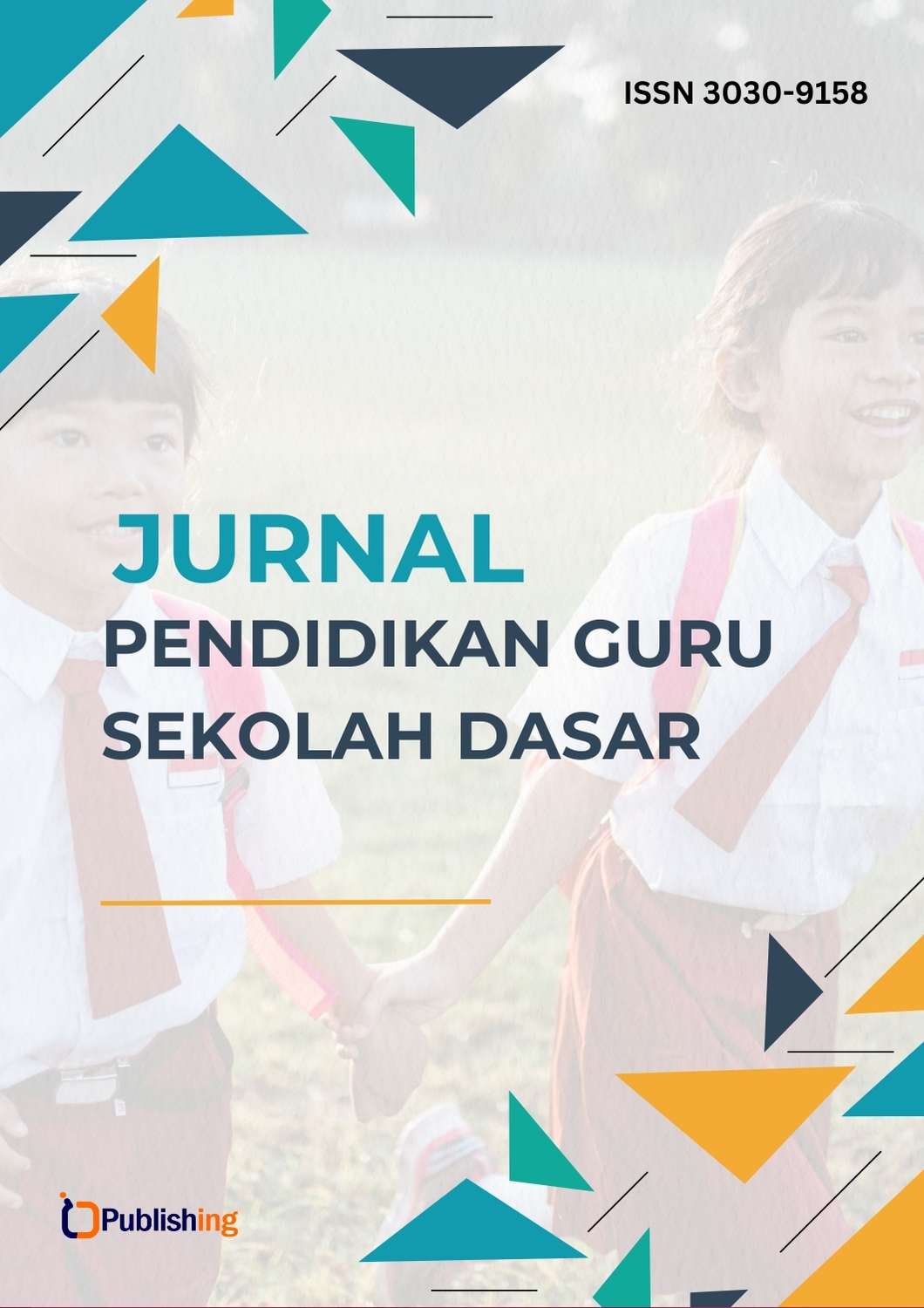An Innovative Approach to Primary Education: Teaching Text Comprehension Through Neuro-Pedagogical Strategies
DOI:
https://doi.org/10.47134/pgsd.v2i4.1883Keywords:
Neuro-Pedagogy, Text Comprehension, Primary Education, Cognitive Development, Visual Mapping, Semantic Analysis, Reading Strategies, Innovative Methodology, Hemispheric Activation, Learner MotivationAbstract
This article presents the results of a scientific study aimed at enhancing primary school students’ reading and text comprehension skills through the application of neuro-pedagogical strategies. The research was conducted using control and experimental groups, where the effectiveness of traditional methods and neuro-pedagogical approaches was compared. The implementation of strategies such as semantic analysis, visual mapping, and clustering in the experimental group significantly improved students’ reading speed, comprehension ability, and motivation. The study emphasizes the activation of cognitive processes and the harmonization of left and right brain hemispheres to improve information retention and understanding. Statistical analysis confirmed the effectiveness of these innovative methods, and the results provide a strong foundation for reforming literacy instruction in Uzbekistan's primary education system. The article concludes with recommendations for wider implementation and future integration with international educational practices
References
Cohen, J. (2007). A Case Study of a High School English–Language Learner and His Reading. Journal of Adolescent and Adult Literacy, 51(2), 164–175.
Duong-Tran, D. (2024). Theorizing Neuro-Induced Relationships Between Cognitive Diversity, Motivation, Grit and Academic Performance in Multidisciplinary Engineering Education Context. ASEE Annual Conference and Exposition Conference Proceedings, ISSN 2153-5965.
Farndale, A. (2023). Children’s communicative capital: Promoting inclusive storying in a diverse preschool community through critical participatory action research. Journal of Early Childhood Literacy, ISSN 1468-7984. https://doi.org/10.1177/14687984231221957
Fernández, A.H. (2022). Neuropedagogy and neuroimaging. Texto Livre, 15, ISSN 1983-3652. https://doi.org/10.35699/1983-3652.2022.40453
Fischer, K.W., & Bidell, T.R. (2006). Dynamic development of action, thought, and emotion. In Damon, W. & Lerner, R. (Eds.), Handbook of Child Psychology (Vol. 1). Wiley.
Glavica, I.N. (2022). Resonance and Education: the Fundamental Emphases of Resonance Pedagogy through the Prism of Resonance Relations. Bogoslovni Vestnik, 82(3), 715–724, ISSN 0006-5722. https://doi.org/10.34291/BV2022/03/Nezic
Hamilton, L.G. (2023). Compassionate pedagogy for neurodiversity in higher education: A conceptual analysis. Frontiers in Psychology, 14, ISSN 1664-1078. https://doi.org/10.3389/fpsyg.2023.1093290
Johnston, L. (2024). A brief neuro-affirming resource to support school absences for autistic learners: development and program description. Frontiers in Education, 9, ISSN 2504-284X. https://doi.org/10.3389/feduc.2024.1358354
Liu, H. (2023). Teaching for freedom, caring for ourselves. Journal of Marketing Management, 39(1), 40–48, ISSN 0267-257X. https://doi.org/10.1080/0267257X.2022.2131268
Liu, Y. (2024). Enhancing Artistic Thinking and Literacy in Piano Teaching Through Biotechnological Innovations and Digital Health Integration. Journal of Commercial Biotechnology, 29(3), 377–389, ISSN 1462-8732. https://doi.org/10.5912/jcb1750
Luriya, A.R. (1973). The Working Brain: An Introduction to Neuropsychology. London: Penguin Books. pp. 24–69, 112–144.
Martines, V. (2024). Advances in literary and (neuro)linguistics skills that can contribute to healing: Reading many books brings us closer to life. In Educational Innovation to Address Complex Societal Challenges (pp. 222–241). https://doi.org/10.4018/979-8-3693-3073-9.ch015
Mehdi, R. (2023). A neuro-fuzzy model for predicting and analyzing student graduation performance in computing programs. Education and Information Technologies, 28(3), 2455–2484, ISSN 1360-2357. https://doi.org/10.1007/s10639-022-11205-2
Moskvina, N.V. (2001). Neuro-pedagogy – a new scientific direction in education. Journal of Psychology and Pedagogy, №3, 47–53.
Moskvitin, V.A., & Moskvitina, N.V. (2001). Neuropedagogy as an Applied Direction of Pedagogy and Differential Psychology. Vestnik OSU, Issue No. 4, 34–38.
Pişleagǎ, M.V. (2024). Improving the way children with disabilities learn using play-based techniques and seasonal activities. Proceedings of SPIE – The International Society for Optical Engineering, 13187, ISSN 0277-786X. https://doi.org/10.1117/12.3018264
Ramesh, P.V. (2024). The photoreal new-age innovative pedagogical & counseling tool for glaucoma with 3D augmented reality (Eye MG AR). European Journal of Ophthalmology, 34(3), 870–873, ISSN 1120-6721. https://doi.org/10.1177/11206721231159249
Randolph, A.B. (2022). Engaged Brains: A Course on Neuro-Information Systems. Journal of Information Systems Education, 33(2), 159–168, ISSN 1055-3096.
Smith, F. (1976). Learning to read by reading. Language Arts, 53(3), 297–322.
Tancredi, S. (2024). Stimming as Thinking: a Critical Reevaluation of Self-Stimulatory Behavior as an Epistemic Resource for Inclusive Education. Educational Psychology Review, 36(3), ISSN 1040-726X. https://doi.org/10.1007/s10648-024-09904-y
Tokuhama-Espinosa, T. (2010). Mind, Brain, and Education Science: A Comprehensive Guide to the New Brain-Based Teaching. W.W. Norton & Company.
Venkateswaran, S. (1995). Principles of Teaching English. Madras: Vikas Publishing House Pvt. Ltd. 182 p.
Выготский Л.С. (1982). Мышление и речь. – М.: Педагогика. – 352 с.
Еремеева В.Д. (2000). Нейропедагогика как интегративная наука. Педагогика, №6, 15–20.
Начиная с 90-х гг. прошлого столетия особую известность получили научные направления, в рамках которых разрабатывались вопросы о связи процессов обучения и воспитания ребенка с особенностями организации его мозга: нейропсихология, нейрофизиология, нейропсихолингвистика. Неоценимый вклад в становление смежных с педагогикой наук внесли В. М. Мосидзе, В. А. Москвин, Н. В. Москвина, А. Лурия, Т. А. Доброхотова, Н. Н. Брагина, Ч. Осгуда и Дж. Миллер, Н. Хомская, Ю. Лотман, К. Ф. Седов, Блейк, Пейп, Чошанов.
Хрызман Т.П. (2000). Нейропедагогика как новое направление в образовании. Вестник практической психологии образования, №4, 42–47.











